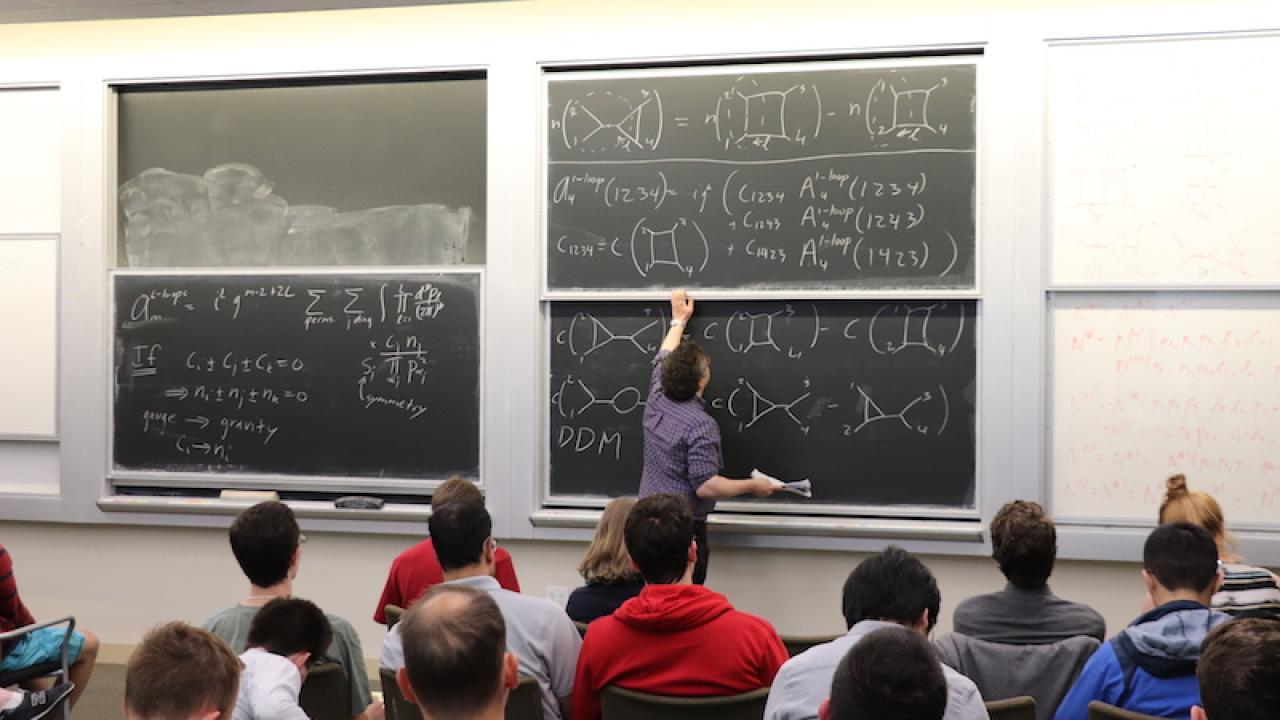Physics faces an equity problem.
According to the latest statistics from the American Physical Society, underrepresented minorities accounted for only 15% of bachelor’s degrees, 12% of master’s degrees and 7% of doctoral degrees awarded to physics students. This equity gap, though not nearly as large, is also pronounced for women in physics, who account for 22% of bachelor’s degrees, 23% of master’s degrees and 20% of doctoral degrees awarded to physics students.
These equity gaps may be related to biases embedded in physics courses themselves, new research from UC Davis and San Jose State University suggests. In a study, published in Physical Review Physics Education Research, researchers tweaked one introductory physics course to focus on a concepts-first paradigm, pushing complicated calculations to the end of the course. In other courses, they allowed students to retake exams.
“When gender or underrepresented minority student achievement gaps are identified in physics classes, differences between students’ ‘preparation’ are often labeled as a cause,” wrote the study’s authors David Webb, a senior lecturer emeritus in the Department of Physics and Astronomy, and Cassandra Paul, a professor of physics and astronomy at San Jose State University. “We present two counterexamples where achievement gaps are eliminated by changing two different course structures that, importantly, do not change course content or the intellectual level of the course.”
Concepts-first approach
To understand how course pedagogy influenced student retainment and achievement, the researchers altered the makeup of an introductory calculus-based physics course without changing the course’s academic standards or its content.
The researchers shifted the course to focus solely on introductory physics concepts, which were studied in detail during the first 60% of the course without the introduction of complicated calculations. In the final 40% of the class, students focused on complicated calculations that hinged on those physics concepts. The students then took a final exam, the results of which were compared to final exam results from three unchanged physics classes taking the same exam.
In the concepts-first class, there was a zero final exam grade gap between students from underrepresented minorities and their peers. In the standard lecture sections, the final exam grade gap between underrepresented minority students and their peers was “about 3/4 of a grade point, roughly the difference between a C and a B-,” according to Webb.
“Instead of finding a group of students to be deficient on average as they enter the course, we find that the course itself can be identified as deficient in its design, specifically when it is not serving all students equally,” the researchers said.
Eliminating gender gaps through retake exams
In another cohort of classes, the researchers left the introductory physics course unchanged but introduced the option for students to retake exams between regularly scheduled biweekly exams.
By the end of the course, the four retake exam classes showcased a zero gender gap in course grades. In courses without the retake option, the gender gap was about 1/4 of a grade point average.
“Our data show that introducing exam retake options can eliminate the gender gap, and that introducing all concepts exclusively before introducing complicated calculations can eliminate underrepresented minority gaps in our specific contexts,” Webb said. “To generalize our conclusions, demographic group differences are, perhaps, better understood as a problem with the system rather than with the demographic groups.”
The research is a step towards making physics education more equitable.
Media Resources
Attributing equity gaps to course structure in introductory physics (Physical Review Physics Education Research)
Greg Watry is a writer for the UC Davis College of Letters and Science, where this article was originally published.
